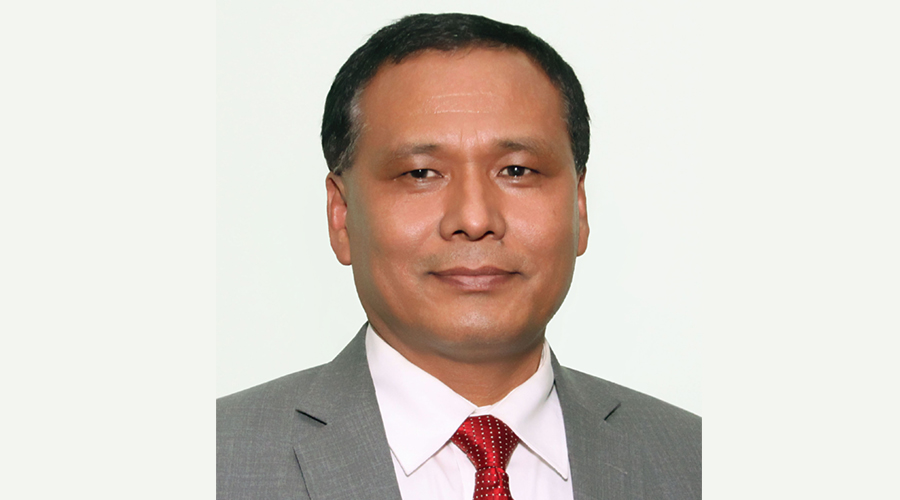KATHMANDU: Kulman Ghising, the Managing Director of Nepal Electricity Authority (NEA), made a significant revelation on Friday, disclosing the remarkable financial turnaround of the state-owned power utility under his leadership. Despite facing a lack of government support in the ongoing dispute over dedicated and trunk line billing, Ghising presented a detailed work performance report that highlighted NEA’s achievements over the past eight years.
NEA’s Financial Turnaround
At a press conference marking the third anniversary of his second term as NEA’s MD, Ghising claimed that the NEA had generated an impressive profit of Rs 82 billion since he took over the leadership. “The NEA, which had a deficit of Rs 34.61 billion eight years ago, has now accumulated a profit of Rs 47.41 billion,” he stated. This marks a significant turnaround for the NEA, which had been struggling financially before Ghising’s appointment.
When Ghising first assumed the role of MD in mid-August 2016, the NEA was grappling with a net loss of Rs 8.89 billion in the Fiscal Year (FY) 2015/16. However, by the end of his first term in August 2020, the NEA had started its journey toward profitability, recording a net profit of Rs 1.50 billion in FY 2016/17. This upward trajectory continued, with the NEA achieving a profit of Rs 13.31 billion in the last FY 2023/24.
Growth in Electricity Consumption
Ghising also highlighted the significant increase in electricity consumption over the past eight years. “Eight years ago, 3.72 billion units of electricity were consumed per year, but now electricity consumption has reached 10.23 billion units,” he said. This increase in consumption is reflected in the rise in per capita energy use, which has surged from 131 units to 400 units during the same period.
After being reappointed as MD on August 9, 2021, Ghising continued to focus on expanding electricity access. He noted that the electrification rate, which stood at 89.7 percent three years ago, has now reached 99 percent. This achievement, according to Ghising, is a testament to NEA’s commitment to increasing access to electricity across the country.
Profitability Amid Reduced Tariffs
One of the most striking aspects of Ghising’s report was the NEA’s ability to increase its profits despite reducing electricity tariffs three times by about 25 percent. Ghising revealed that out of approximately 5.9 million customers, around 2.2 million are paying only the minimum fee of Rs 30, effectively receiving free energy. “Despite the reduction in tariffs, our profits have continued to rise, demonstrating the efficiency and effectiveness of our operations,” he said.
Achievements in Transmission and Power-Leakage Control
Ghising also shed light on the significant progress made in the construction of transmission lines during his tenure. “We have achieved remarkable progress in constructing transmission lines, overcoming challenges such as local obstacles, land acquisition issues, and the need to transport construction materials by people, carts, and helicopters to geographically difficult areas,” he said.
In addition to expanding the transmission infrastructure, the NEA has made substantial strides in controlling power leakage. “Eight years ago, the system experienced 25.78 percent of electricity leakage. By adopting more organized and effective measures, we reduced the system’s leakage to approximately 12.73 percent in the last fiscal year,” Ghising reported. This reduction in leakage has generated an additional income of about Rs 12 billion per year for the NEA.
The total connected power capacity under the NEA’s subsidiary companies and private sector power projects has now reached 3,157 MW. Of this, 2,300 MW has been added in the last eight years, and 1,706 MW in the last three years alone, underscoring the rapid expansion of the country’s power infrastructure.
Billing Dispute with Industrialists
Despite these achievements, Ghising has found himself at odds with industrialists over the billing for electricity supplied through dedicated and trunk lines. Addressing the dispute, Ghising questioned why the dissatisfied industrialists had not pursued legal channels to resolve their grievances. “We issued the discount bills based on legal provisions and supporting evidence. I have never claimed that there is no data from the TOD meters. We have provided proof whenever it was requested. If the billing was not satisfactory, the appropriate step would be to take the matter through the legal process. However, they did not do so, and only they know why,” he remarked.
Ghising emphasized that the NEA has billed according to the law, with all relevant evidence properly documented. The NEA had submitted evidence of the billing process to the Public Accounts Committee of the House of Representatives on Thursday, further bolstering its position. Despite this, many industrialists who benefit from dedicated and trunk lines have been reluctant to pay the outstanding amounts, while industries with lower tariffs have been more prompt in settling their dues.

